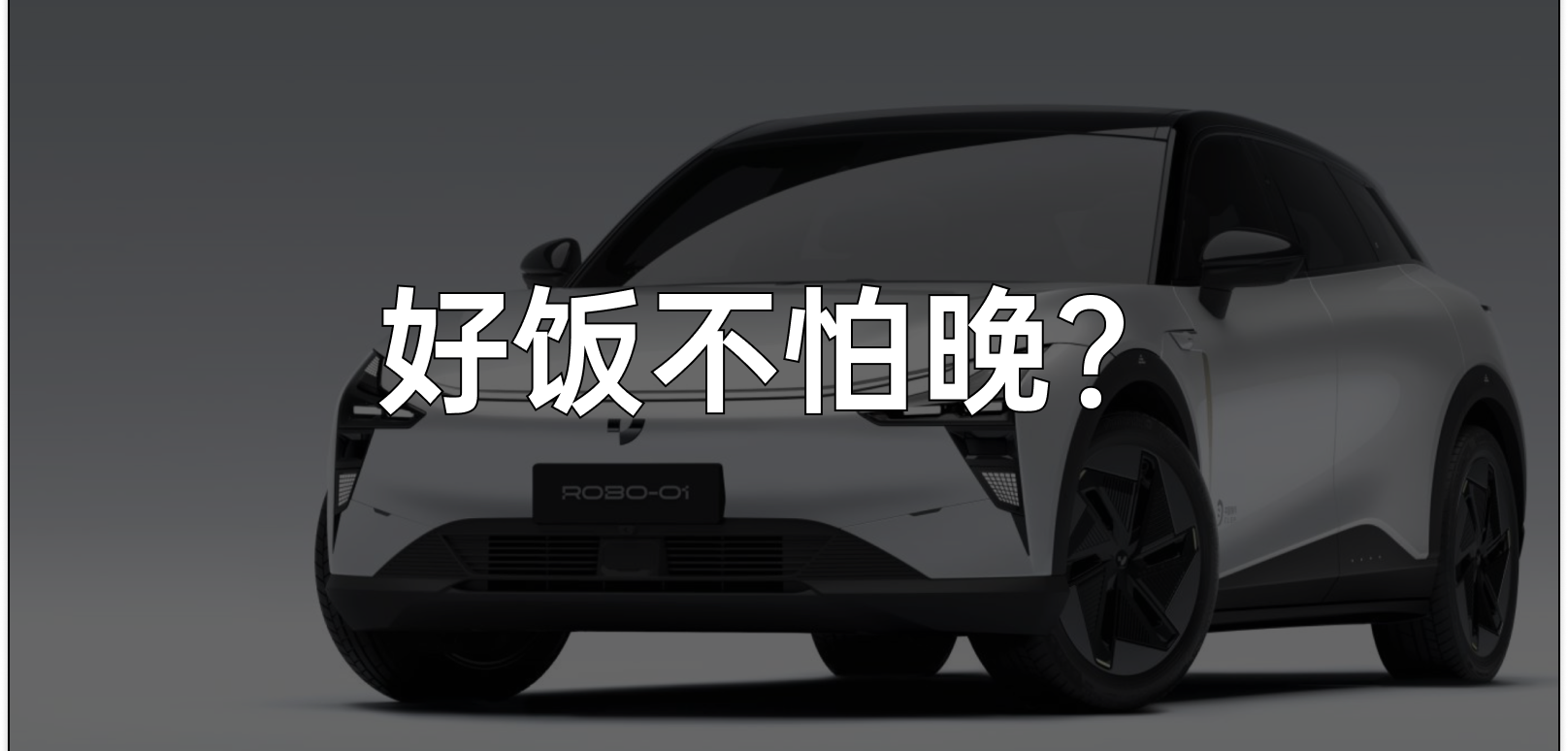Last night, Jidu’s first car model, the Jidu ROBO-01 lunar exploration limited edition, was officially released with a final price of 399,800 yuan. After the price was announced, the general feedback in our official community was: it’s really expensive.

Expensive? Looking at the price of nearly 400,000 yuan, it is indeed not cheap, but it should be noted that this car is not mass-produced. The planned sales volume of the ROBO-01 lunar exploration version, which has a production limit of only 1,000 units, even if CEO Xia Yiping announced at the press conference that an additional 1,000 units will be sold, the total sales volume of this car would still only reach 2,000 units. Therefore, you can view the lunar exploration version as the top-of-the-line version of the mass-produced ROBO-01.
So, 399,800 yuan is the “ceiling” for the ROBO-01. With this premise, combined with the product itself, we can anticipate what the final product and price of the Jidu ROBO-01 will be.
Take a closer look at ROBO-01
I regretfully missed the unveiling and photography of the concept car before, but at this press conference, it was my first time seeing the ROBO-01 lunar exploration version up close. My two major impressions after seeing the actual car were: the body is really not small; the overall feeling is great.
Looks bigger in person than in pictures

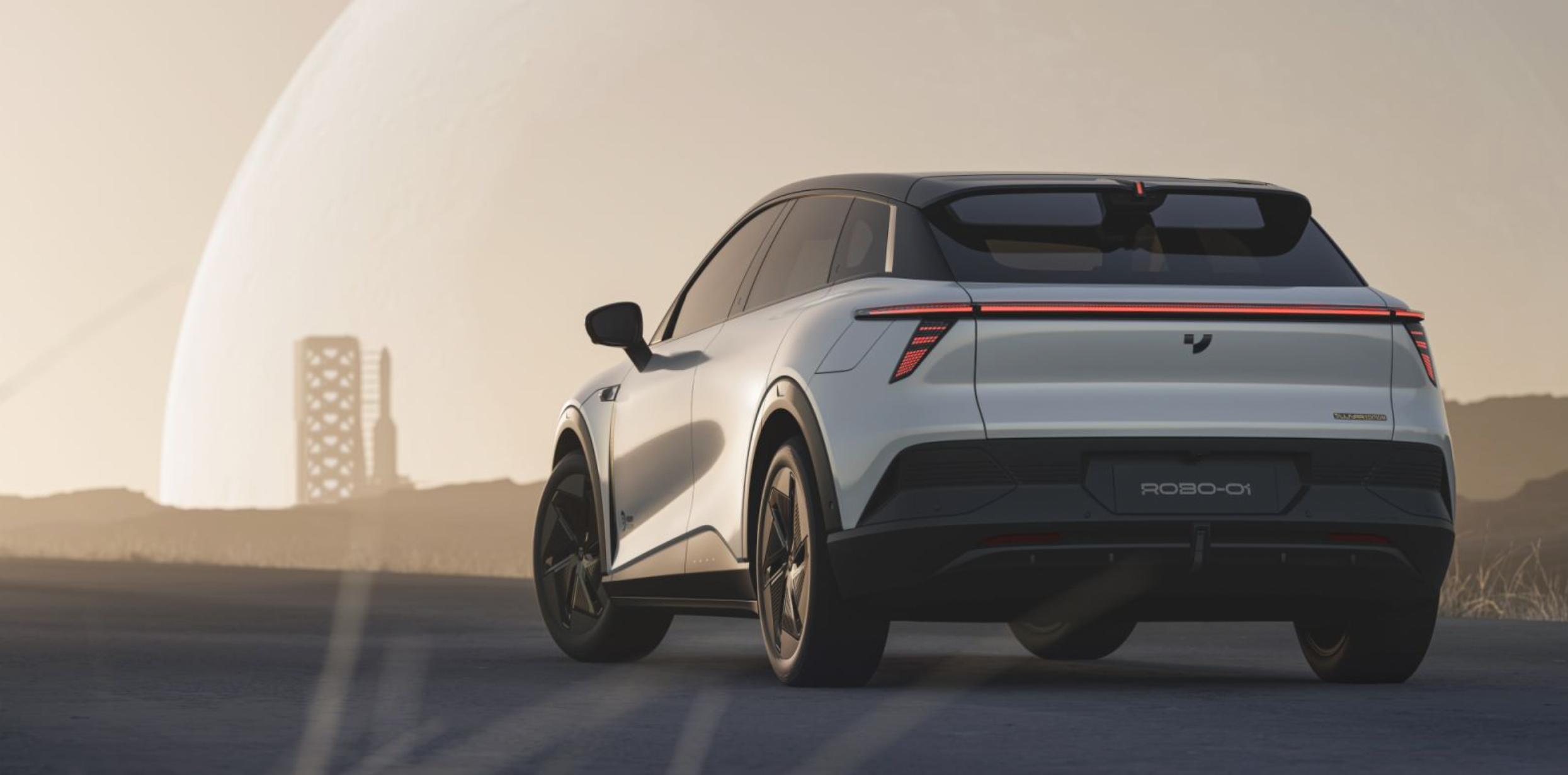 First of all, it should be pointed out that the Jidu ROBO-01 is a model that appears larger in real life than in pictures, and the last model that gave me the same feeling was the Jidu Extreme Krypton 001 on the same platform.
First of all, it should be pointed out that the Jidu ROBO-01 is a model that appears larger in real life than in pictures, and the last model that gave me the same feeling was the Jidu Extreme Krypton 001 on the same platform.
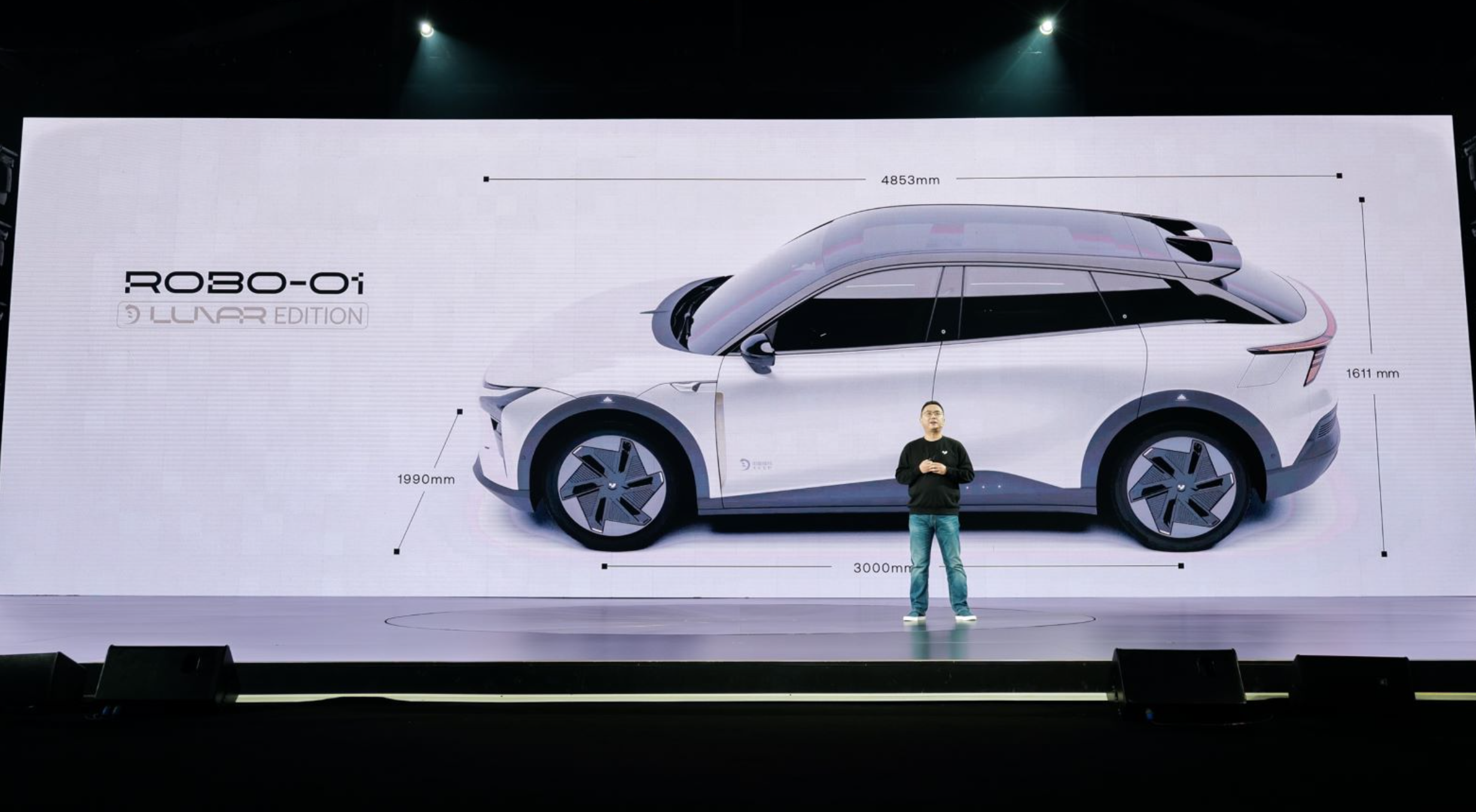
To be more intuitive, let’s list a set of data. The body size of the ROBO-01 Lunar Exploration Edition is 4,853 mm in length, 1,990 mm in width, 1,611 mm in height, and the wheelbase reaches 3,000 mm.
The body length is 38 mm shorter than the XPeng G9, and even the wheelbase is 2 mm longer than the XPeng G9. However, its body height is 69 mm lower than the XPeng G9, so the overall posture will be more like a cross-border vehicle, rather than a traditional SUV.
Design team beats engineering team
Another point is the overall sense. Unlike previous concept cars, many sensors of the ROBO-01 Lunar Exploration Edition have been minimally integrated with the body. For example, the Jidu team ultimately canceled the lifting lidar and instead integrated them below the headlight assembly. In addition, the lateral perception camera is also integrated in the B-pillar, which is similar to the design of the Model 3 and the IM L7.

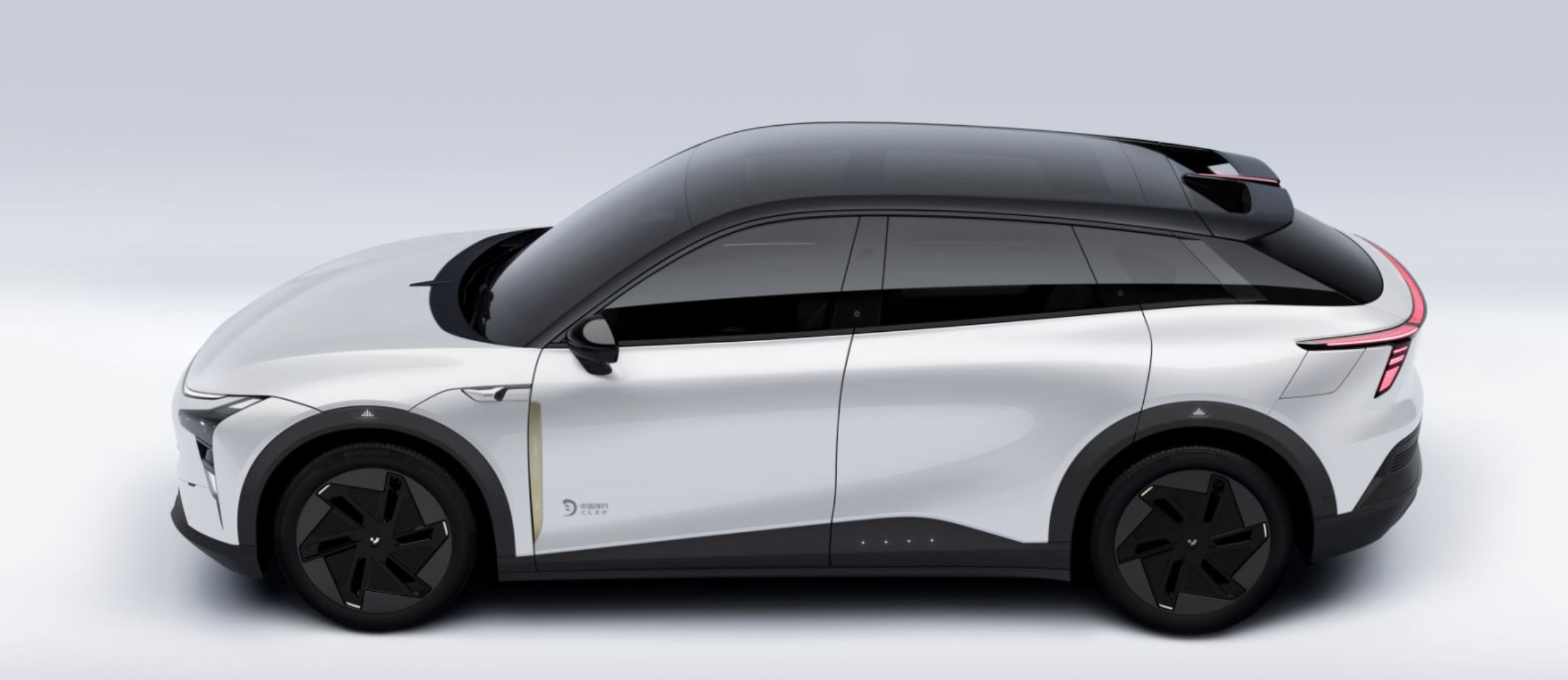 The biggest highlight of ROBO-01 is that it cancels the traditional physical door handle. This car adopts electric opening, which can be seen through the buttons on the B and C pillars. The combination of electric doors and electric suction doors can significantly improve the sense of luxury. However, if not done well, “intelligent” can become “stupid.” Xia Yiping, the CEO of Jidu, also stated that in order to obtain a better electric door experience, they have put forward high requirements for both software and hardware. For example, in order to obtain better ranging and obstacle avoidance ability, they use millimeter-wave radar instead of ultrasonic radar.
The biggest highlight of ROBO-01 is that it cancels the traditional physical door handle. This car adopts electric opening, which can be seen through the buttons on the B and C pillars. The combination of electric doors and electric suction doors can significantly improve the sense of luxury. However, if not done well, “intelligent” can become “stupid.” Xia Yiping, the CEO of Jidu, also stated that in order to obtain a better electric door experience, they have put forward high requirements for both software and hardware. For example, in order to obtain better ranging and obstacle avoidance ability, they use millimeter-wave radar instead of ultrasonic radar.
At the same time, Xia Yiping has also put forward high requirements for the software team to ensure that multiple dimensions such as door opening speed and obstacle avoidance can obtain a good user experience.
By the way, in addition to the button electric opening on the B and C pillars, users of Jidu ROBO-01 can also open the door through various methods such as mobile phone Bluetooth, NFC, UWB key, and voice.
In an interview after the press conference, Xia Yiping also said that users will definitely pay for “laziness”. An example he gave is the experience of using electric doors. When we use traditional gasoline vehicles, the process is too complicated: take out the key-unlock-pull the door-get in-close the door-press start.
If it can be solved in three steps, don’t use five steps. The user approaches the vehicle-the electric door opens-get in and step on the brake-the entire vehicle is powered on, and the door automatically closes. Isn’t this experience good? Therefore, Jidu’s expectation for electric doors is to make users truly “use without feeling.”“`



Returning to the design, another feature of the Jidu ROBO-01 is that the transitions of the body have almost no hard straight lines. Whether it is the angle of the headlights or the upward-curved waistline on the side, soft transitions are used between the surfaces, while sharp lines are used in details such as the lamp group.
Overall, the Jidu design team has put a lot of effort into the shape. Xia Yiping also said that he is very strict with the design and spends the most time in the design review room. However, when it comes to the shape, it is still up to individual users to decide whether they like it or not.
I think everyone has their own evaluation of the appearance, but for the ROBO-01 interior, I think most people would give the evaluation of “bold” or “avant-garde”. As usual, let’s take a look at the pictures.
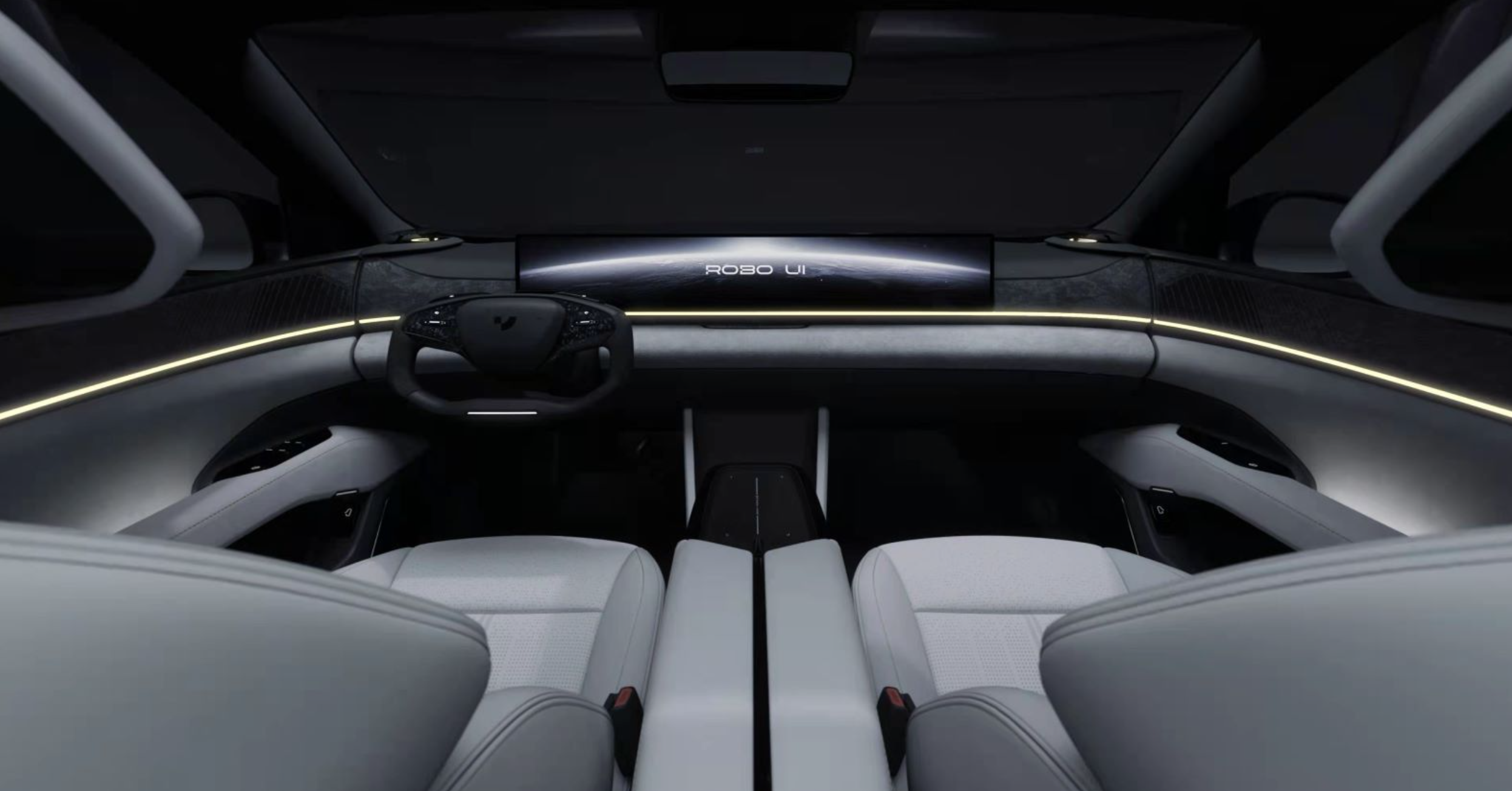
“`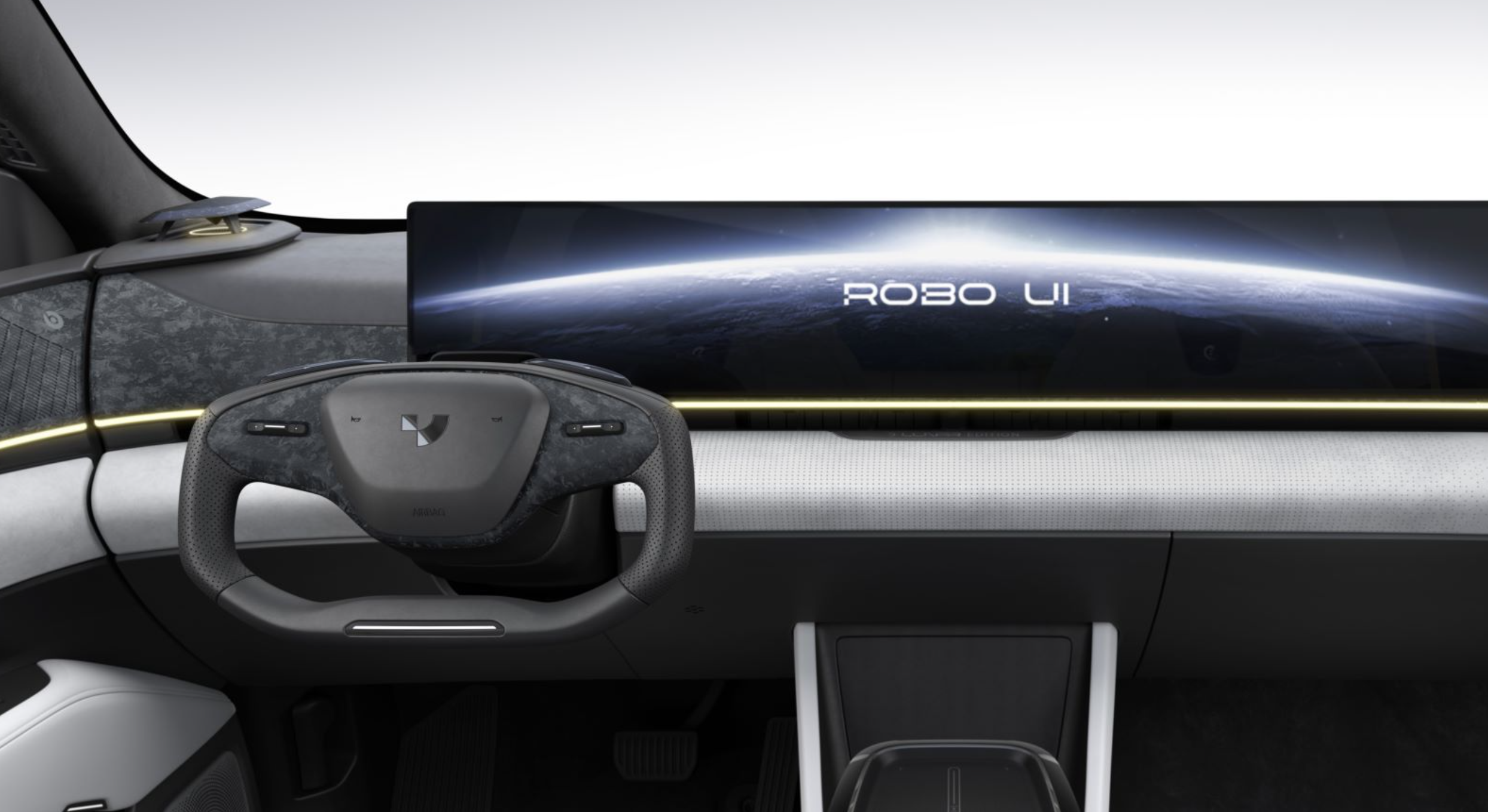
The overall design of Jidu’s interior is very simple, yet sufficiently technological with several highlights: Yoke steering wheel (internally known as U-shaped steering wheel) and an integrated big screen with Qualcomm 8295 chip.
Currently, Jidu ROBO-01 is expected to be the first model in China to adopt the U-shaped steering wheel, and Xia Yiping explicitly stated that the U-shaped steering wheel has even more advantages than traditional circular steering wheels, which one will get used to after trying it out.
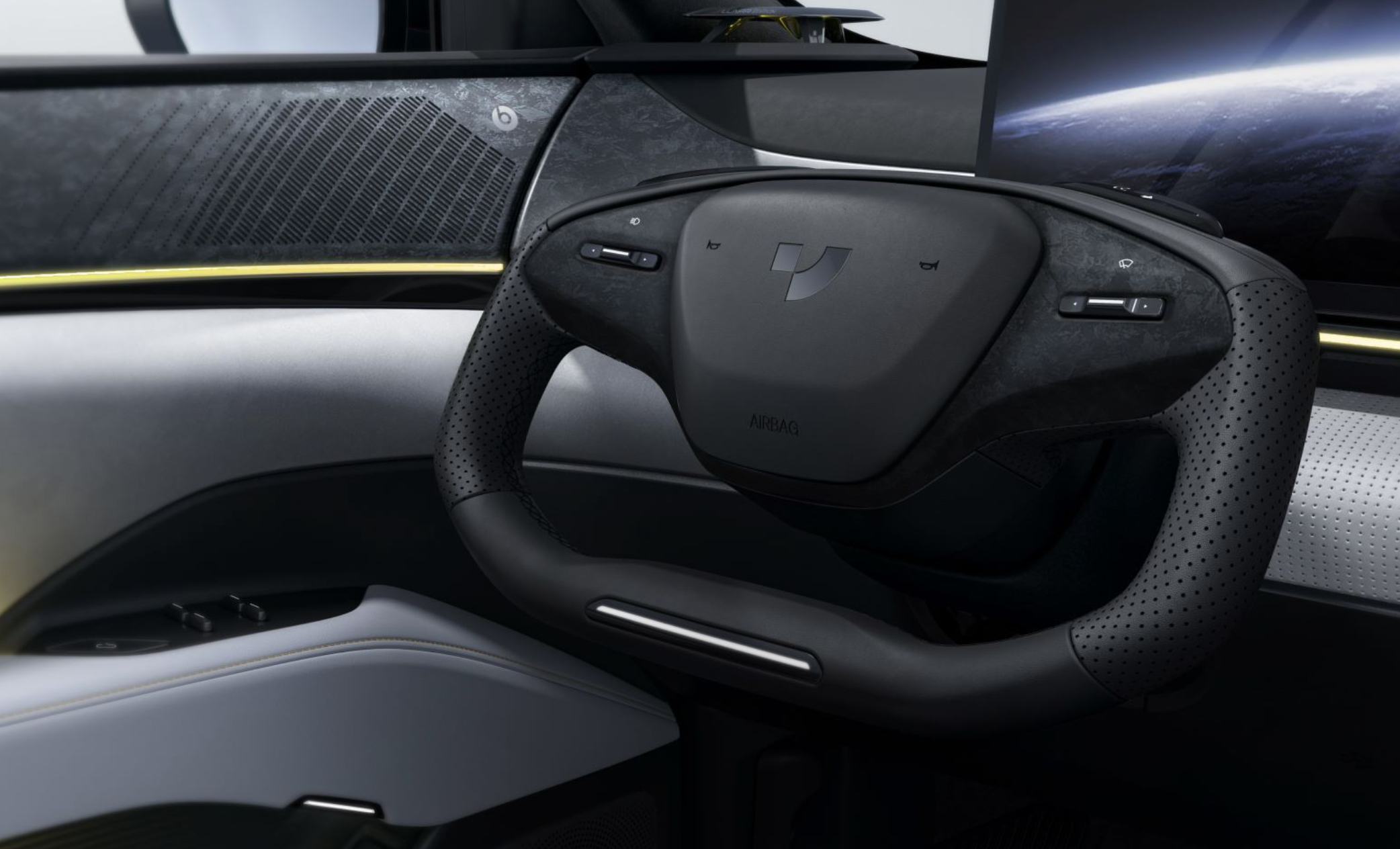
My opinion on the U-shaped steering wheel is this: the user experience must be the best here, and the core of this user experience is the high-precision directional ability of the steering wheel. Jidu ROBO-01’s U-shaped steering wheel must have the same directional ability as a bicycle handlebar, in order to make it safer and more convenient for users to use.
For Jidu ROBO-01, the U-shaped steering wheel is indeed a better solution because unlike circular steering wheels, it does not obstruct the view. Combined with the 6K integrated big screen of 35.6 inches on Jidu ROBO-01’s central console, it can indeed help users to better read information and observe road conditions.
 And as for the Dalian screen, there are several points worth mentioning. First, the basic quality is high, with a resolution of up to 6K and a ultra-high contrast ratio of 10,000:1. Additionally, this is likely the largest seamless display screen in the automotive field. As mentioned in a previous article, the so-called Dalian screens in vehicles such as the Mercedes-Benz EQS are not actually seamless screens, but rather have glass surfaces spaced between them. In contrast, the ROBO-01 screen can truly achieve seamless display.
And as for the Dalian screen, there are several points worth mentioning. First, the basic quality is high, with a resolution of up to 6K and a ultra-high contrast ratio of 10,000:1. Additionally, this is likely the largest seamless display screen in the automotive field. As mentioned in a previous article, the so-called Dalian screens in vehicles such as the Mercedes-Benz EQS are not actually seamless screens, but rather have glass surfaces spaced between them. In contrast, the ROBO-01 screen can truly achieve seamless display.
Behind the screen, the core hardware for interaction is the chip. The ROBO-01 uses the latest flagship chip, the Qualcomm Snapdragon 8295. At the press conference, Xia Yiping made it clear through various performance comparisons that the Qualcomm 8295 outperforms the 8155 chip in terms of performance. For example, the Qualcomm Snapdragon 8295 uses 5nm manufacturing technology and has a computing power of 30 TOPS, which is eight times that of the 8155.
Xia Yiping also stated that, in practical applications, the large computing power of the Qualcomm 8295 allows the ROBO-01 to achieve a fully fused 3D intelligent driving map in all scenarios. The external environment is displayed in real-time on the large screen, and the driver can manipulate it at will.

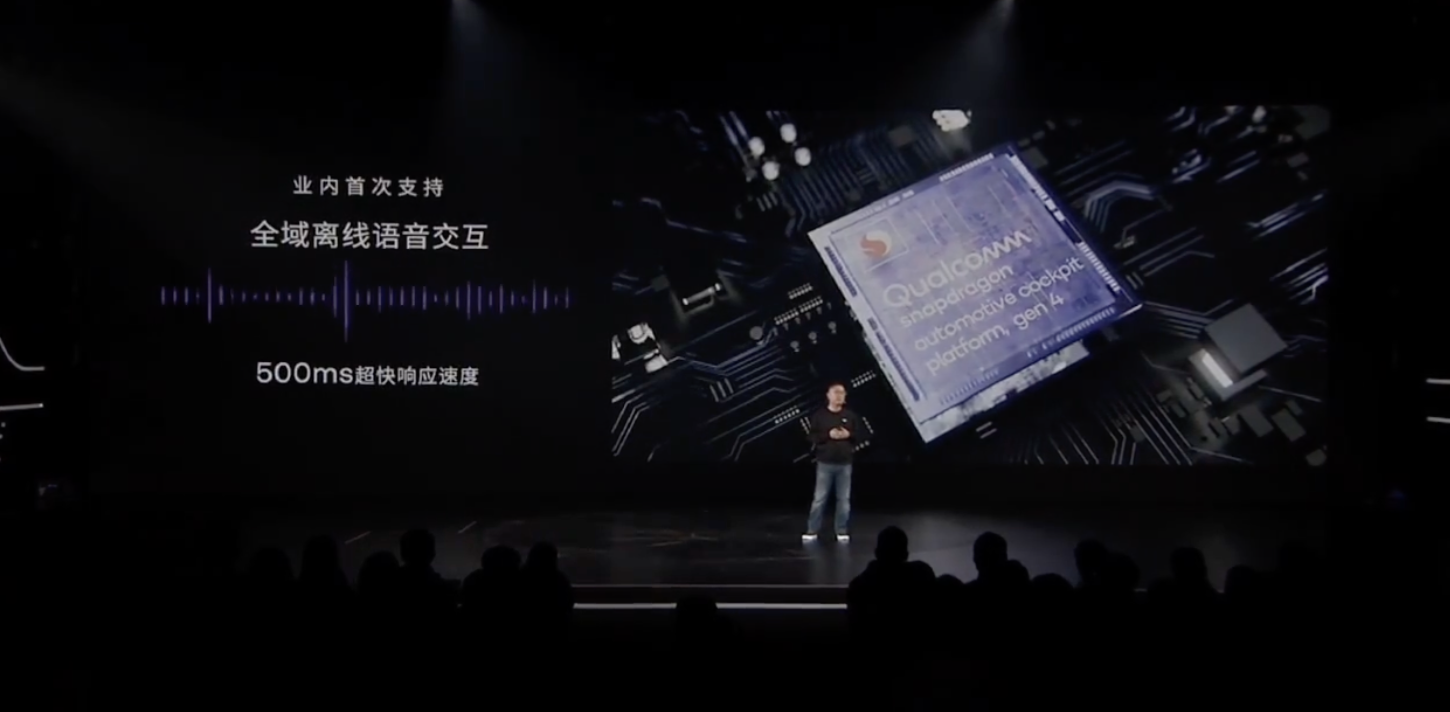 The other point is the display of speech ability. Jidu ROBO-01 can achieve global and offline speech ability, integrating speech recognition and semantic understanding. The response speed of speech can be within 500ms, and the interaction speed of the entire process can be within 700ms. It can also interact even in areas without network environment, such as mountainous areas and tunnels.
The other point is the display of speech ability. Jidu ROBO-01 can achieve global and offline speech ability, integrating speech recognition and semantic understanding. The response speed of speech can be within 500ms, and the interaction speed of the entire process can be within 700ms. It can also interact even in areas without network environment, such as mountainous areas and tunnels.
In addition, ROBO-01 also supports multi-person parallel interaction. For example, the car occupants can simultaneously issue navigation, air conditioning or other instructions, which can be executed simultaneously by Jidu ROBO-01.
The intelligent level of the cabin’s speech interaction has been greatly improved since the installation of 8155. What new functions can the more powerful 8295 bring, and which existing functions can be improved, are things we are all looking forward to.

There is also a detail in the cabin. As we mentioned earlier, Jidu ROBO-01’s cabin design is very simple, and a large part of the reason is that Jidu has cut a lot of physical buttons. Combined with the configuration of hidden air conditioning vents, the entire interior has become much cleaner.
Jidu ROBO-01 even cut the steering and wiper stalks and replaced them with buttons integrated into the steering wheel. Xia Yiping said that they have adjusted many versions of the steering button above the steering wheel internally because they want to satisfy people with different finger lengths as much as possible.
However, Xia Yiping also said that they will not cut off all the buttons in the car. In the interview, Xia Yiping also stated that they will not innovate just for the sake of innovation, but will still start from the user experience.
Intelligent Driving
Regarding intelligent driving, we can start with the hardware. Jidu ROBO-01’s perception hardware includes:
- 2 LiDARs
- 5 millimeter-wave radars.- 12 high-definition cameras (7 with 8 million pixels)
- 12 ultrasonic radars
- 2 NVIDIA Orin-X chips
The hardware configuration of Jidu ROBO-01 is definitely among the top echelon of the industry, and this high configuration is not only due to the abundance of hardware, but also the high hardware specifications.
For example, Jidu ROBO-01 has 7 cameras with 8 million pixels. Xia Yiping said that this high configuration hardware is to ensure safety. As a start-up company, Jidu prefers to have redundancy rather than risk dangerous situations caused by poor perception quality. In the future, as algorithm capabilities improve, hardware requirements will not be as high, so naturally there will be a reduction in hardware or a decrease in specifications.

The progress of intelligent driving is the proudest accomplishment of the Jidu team. Within 600 days of its establishment, Jidu has achieved on-road testing that integrates highway and urban domains. The so-called dual-domain integration refers to the connection between the highway domain and the urban domain. Jidu has also previously demonstrated a test video of automated driving, which includes closed roads and open city roads, and covers typical scenarios such as unprotected left turns in the city.
 When it comes to Jidu’s intelligent driving capabilities, we cannot ignore Baidu Apollo’s accumulation in this industry. Baidu Apollo is one of the first companies in China to start automated driving development and robotaxi operations. Up to now, it has covered robotaxi routes with integrated lidar, as well as the vision-based Apollo Lite.
When it comes to Jidu’s intelligent driving capabilities, we cannot ignore Baidu Apollo’s accumulation in this industry. Baidu Apollo is one of the first companies in China to start automated driving development and robotaxi operations. Up to now, it has covered robotaxi routes with integrated lidar, as well as the vision-based Apollo Lite.
However, Baidu Apollo’s biggest problem is its production capacity. In the eyes of users, this is a company that “only flowers but no fruits.” The most important dimensions for assessing automated driving are still production capacity and experience. For example, Huawei’s ADS has achieved functionality push in urban NCA. Currently, users can only experience Baidu’s automated driving products in limited areas of robotaxi.
Now the biggest expectation for Jidu from the outside world is whether it can perfectly take over the years of development results of Baidu in the automated driving industry. In the interview, Xia Yiping also stated that the intelligent driving team of Jidu and Baidu are integrated, not developing alone. However, key decisions such as function definitions are made by Jidu itself, which means that Jidu is responsible for the overall direction, such as functional requirements and performance, while the two sides are more integrated in algorithm development to seek mutual development and support.
Is it too late to come?
The first vehicle will not be delivered until the third quarter of 2023. Many people think that Jidu is already late.
Xia Yiping has been asked similar questions more than once. In his view, the competition among new forces in the previous stage was more on the level of the three-electric layer, such as whether each company’s electronic and electrical architecture is powerful enough. But in the second stage, people are competing on intelligence, such as the level of intelligent cabin and driving.
 Meanwhile, Xia Yiping also said that Jidu’s cars now can achieve 3s-grade acceleration and 600 kilometers of endurance, just like what other car companies can do. But the competition on the second half (intelligence) of smart electric cars has just begun.
Meanwhile, Xia Yiping also said that Jidu’s cars now can achieve 3s-grade acceleration and 600 kilometers of endurance, just like what other car companies can do. But the competition on the second half (intelligence) of smart electric cars has just begun.
Xia Yiping’s words are not unreasonable. Geely itself is a shareholder of Jidu Automotive. It’s not a surprise to work together to create a high-quality electric car to compete in the market. But the most crucial part is whether Jidu can fulfill its promises made during the press conference.
Imagine this: Jidu ROBO-01 co-existing with the JiKe 001. With a price cut to the thirty-thousand-rmb range and equipped with the 8295 chip, the new automobile can surpass other emerging automakers in interaction ability and realize urban NOA. Would you still say that it’s too late for it?
The following points need to wait until the third quarter of next year to verify, and as for the price, we can expect it after the Guangzhou Motor Show a month later.
Key Points Interviewing Xia Yiping
After the press conference, we also had the opportunity to interview CEO Xia Yiping. Whenever asked a question, he answered fluently. It’s apparent that Xia Yiping has many observations and reflections on the market and products.
Why does ROBO-01 currently only have a limited edition?
Xia Yiping: It’s more of a strategy because Jidu is still a start-up, and in the early stages, it needs to instill its concept into the public. The price of the regular version will be announced at the Guangzhou Motor Show.
Will Jidu go for a direct sales model? Or will it adopt dealerships + direct sales later?
Currently, it’s a direct sales model because there are requirements for the brand.
What do you think of the current market? Is Jidu too late to join in?Late is definite, but it is relatively late, as the current market capacity is still huge. With an annual growth rate of millions, it is crucial for Jidu to catch up. The first wave of electrification flattened the product, and now the homogeneity of the products is severe, but the competition in the field of intelligentization has just begun. Currently, the center of the product is the intelligent experience, including the cabin and smart driving, and Jidu has high requirements for software.
What is Jidu’s R&D system and advantage?
Jidu currently has 2,040 employees, and 70% of them are software engineers. Our electronic and electricals are the highest in the industry, and everything is dual-redundancy. A lot of the software we are developing is preparing for the next generation platform. Jidu’s cabin can mobilize any smart driving function.
In addition, Baidu has always had a supercomputing platform and did not start doing it recently. Tesla has DOJO, and Baidu also has its own supercomputing center. Software companies like Baidu have inherent advantages in entering the field.
New forces already have city NOA, how will Jidu deal with the competition?
The functions have not been experienced yet, but it is certain that many things will come from Robotaxi, and the ability close to L4 will create intelligent driving. Dual-domain integration was already running on the simucar in September last year.
At present, it is confirmed that Jidu’s smart driving is ready to use upon delivery, and intelligent driving can be experienced once the mass-produced cars are available, expected within the year. In addition, the models of Jidu are multi-domain fusion as soon as they come out.
What is the level of smart driving capability that mass-produced cars can achieve?
Jidu is standard for the whole series, ready to use immediately, and many functions are charged elsewhere, but, in our view, simple functions are not charged, while advanced functions might be charged.
What is the progress of software R&D, and has the production capacity planning system been established?The progress of software for intelligent cockpits/driving is approximately 70-80%. Our VP vehicles can be fitted with software and run in just 1.5 hours, which is relatively rare in the industry. Sales and component volumes for next year are already fixed. The preparation for mass production is already running smoothly as many supply cycles are about 12 months long.
The definition of success, what is the goal?
Currently, success is not just manufacturing vehicles or having a good brand and software. The next stage’s significant task is the establishment of the brand, sales, and service system. Only when we sell over 10,000 units per month can we consider ourselves successful. I (Xia Yiping) am very strict in the desing field and spend most of my time in the design review room.
Has the concept of automotive robots changed now? What have these ideas done for you and Jidu as well?
One concept is that robots do not necessarily have to have two feet. Robots can appear in the form of cars, so interaction, particularly in voice, is crucial for automotive robots at this stage as it’s not possible to use the touch screen. The significance of speech is as important as autonomous driving, and its R&D difficulty is no less than autonomous driving. The ability to walk freely and perceive is something that needs to be iterated in the long term as it’s vital for long-term coexistence in the external environment. The robot’s natural interaction, free movement, and independent growth are essential.
At present, most interactions are straightforward and directive. To thrive in the natural world, relying on local computing power is critical, so natural communication is fundamental to the concept of automotive robots. Moreover, autonomous driving is vital for free movement, so even the low configurations will not create a typical L2++ car. The core competency still lies in controlling chips and algorithms.
What is the route for city-level intelligent driving? A broader high-precision map or heavier perception?
Is it more critical to have a broader high precision map or heavier perception for city-level intelligent driving?- 核心人才的引进、留存和培养是一大困难。
- 前期的资金投入和产能建设也是一个巨大的挑战。
- 产品开发和交付过程中还遇到了市场调整、政策调整等多种不确定性。There were many challenges, starting with a lack of personnel and external factors such as chip shortages and the pandemic, which had a significant impact on the company. During the power outages in Chengdu, Jidu dispatched personnel to monitor its supplier in Chengdu, and as soon as there was electricity, Jidu immediately applied to be first in line for the supplier’s products. In addition, building a team posed challenges as an emerging company had to integrate people with diverse backgrounds.
On intelligentization and innovation
For a long time, the level of automotive intelligentization has lagged behind that of smart home appliances, so there is no need to educate users. The learning cost of many configurations is low, such as the U-shaped steering wheel, which took me two days to adapt to. From a development perspective, the circular steering wheel still has some drawbacks, such as obstructing the view, making the driving experience uncomfortable. Moreover, once we have used intelligent things, we cannot go back. Currently, the operation of many things is still too cumbersome. If it can be done in three steps instead of five, people will pay for laziness.
Another point is innovation should not be created for the sake of innovation. It is better to start with user experience and cost. There is no point in doing gimmicks, and we must focus on experience.
How is the steering wheel user experience?
The U-shaped steering wheel has undergone many versions. One is to find the best gripping feel, while the other is to modify the buttons on the steering wheel for several versions. The buttons were made longer because users with short fingers could not reach them.
Opinions on market structure and IPO.
I can understand a lot of what Tesla is doing, and I also want to do it, but it is challenging now. Is it challenging to compete in the 200,000-level market now? The market is very bloody, and it is difficult to bring down costs. However, in the mid-to-high-end market, I am confident. For example, after experiencing the Mercedes-Benz EQE, I am still not looking forward to their products, especially the cabin’s UI, which is unusable. This is also the case with the Cadillac LYRIQ; many traditional things do not meet users’ requirements for technology products in the current stage. Jidu still needs to compete in the mid-to-high-end market.
The current goal is to achieve monthly sales of 10,000 units, and there are no plans for IPO at the moment. IPO is a cause-and-effect relationship. Once the goal is achieved, IPO can be considered.#SEA Platform, is there a plan for 800V and energy supplement network?
Is 800V in high demand right now? Currently, the assistance of 800V to the acceleration is limited due to the overall lack of charging infrastructure. Fast charging for cars depends on charging piles and the power grid, and there is no way to replicate it on a large scale yet. It is currently viable for certain high-end brands to use 800V for limited point-to-point experiences and to enhance brand influence. However, from a perspective of scaling, it is not the most suitable time yet. Accel will be expanding its charging pile network and cooperating with third parties in the near future.
User Profile
The main users/core users of Accel are young, technology-loving clients who overlap slightly with brands such as Tesla.
This article is a translation by ChatGPT of a Chinese report from 42HOW. If you have any questions about it, please email bd@42how.com.
